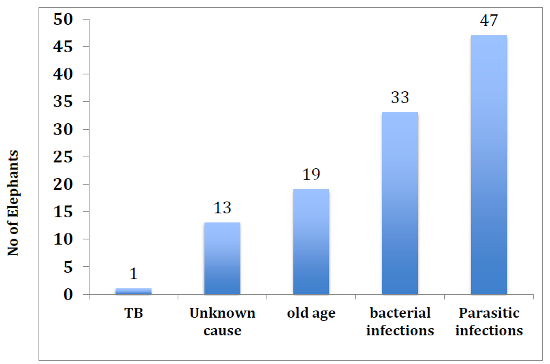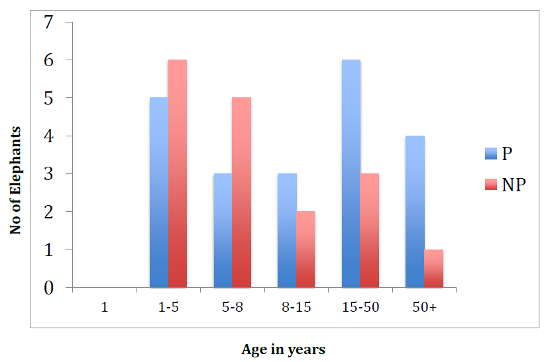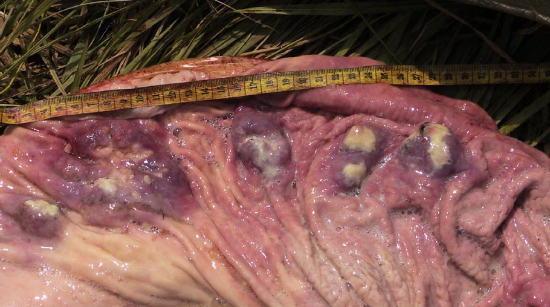Population Threshold and Emerging Parasitic Diseases of Elephants in Sri Lanka
Abstract
The Asian elephant is endangered and every effort is made to conserve the species. Sri Lanka has a unique subspecies of Asian elephant (Elephas maximus maximus) and the Wildlife department in Sri Lanka conducts post-mortems and carefully records all elephant mortalities. In Sri Lanka elephant deaths due to human elephant conflict are increasing but in addition a growing problem of elephant deaths that are not related to human-elephant conflict have been recorded between 2009–2017. The current study was undertaken to investigate this problem using retrospective data analysis.
The study sample consisted of 112 elephant post-mortem records between 2009–2017. These elephant deaths occurred in the South and Uwa wildlife regions of the island which covers approximately 1/3 of land out of the total 65000 Km2 land area of the country. The age range of dead elephants was from a few months old to over 50 years. The post-mortem records were analysed to establish the cause of death. Data was tabulated and analysed using one-way ANOVA (SPSS v 22).
The highest number of deaths (47) was due to parasitic infections and other causes of deaths were due to old age, bacterial infections, tuberculosis, and unknown causes (Figure 1). Deaths due to parasitic infections were a significant cause of death compared to other causes (p=0.05) (Figure 1). The victims of parasitic infection deaths were aged between 2 years to over 50 years. The parasites Parabronema smithi (21) (Figure 2, Figure 3) was the highest, which causes gastric ulcers and has been rarely reported in Asian Elephants. The others that were identified were Fasciola jacksoini (09), Anocephala manubriata (04), and Bathmostpmum sangeri (04).
| Figure 1 | 
The incidence of parasitic infections at post-mortem compared to other causes. |
|
| |
| Figure 2 | 
Comparison of Parabronema positive with other parasitic infections (Fasciola, Anocephala, Bathmostomum) at post-mortem. |
|
| |
| Figure 3 | 
Parabronema associated stomach ulcers of adult elephant cow. |
|
| |
The study reveals a growing problem in the wild Asian population and if not addressed can lead to significant number of deaths of this endangered species. Emergence of these pathogenic parasite diseases may be associated with core concepts of disease ecology: host population thresholds for the invasion or persistence of infectious diseases.